The Mountain Reedbuck, scientifically known as Redunca fulvorufula, is an enchanting antelope species that inhabits the mountainous regions of southern and eastern Africa. With its striking appearance, specialized adaptations, and unique behavior, the Mountain Reedbuck stands out as a fascinating resident of the highlands.
Mountain reedbucks are known for their agility and ability to traverse steep and rocky terrain. They have adapted to living in mountainous environments and are skilled at camouflaging themselves in their surroundings. These reedbucks are endemic to certain regions of Africa, including South Africa, Lesotho, and Eswatini. They play an important role in the ecosystem as herbivores and contribute to the biodiversity of their habitats.
Mountain Reedbuck: Species Profile
COMMON NAME: Mountain Reedbuck
SWAHILI NAME: Paa Mlima
SCIENTIFIC NAME: Redunca fulvorufula
TYPE: Mammal
FOOD: Mountain reedbucks are herbivores, primarily feeding on grasses, herbs, and leaves. They are selective grazers and browsers, consuming a variety of plant species.
HABITAT: Mountain reedbucks inhabit mountainous regions, including grassy slopes, rocky hillsides, and high-altitude plateaus. They are typically found in areas with ample vegetation and water sources.
SIZE: Adult mountain reedbucks stand about 70-90 centimeters (28-35 inches) at the shoulder. They have a body length of approximately 120-150 centimeters (47-59 inches).
AVERAGE LIFE SPAN IN THE NATURAL HABITAT: In the wild, mountain reedbucks have an average lifespan of around 10-12 years.
ACTIVE: Mountain reedbucks are diurnal animals, meaning they are primarily active during the daytime. They are known to rest and seek shade during the hottest parts of the day.
GESTATION PERIOD: The gestation period of mountain reedbucks lasts for approximately 7-8 months. After this period, a single calf is born, and it remains hidden in vegetation for protection.
WEIGHT: Adult mountain reedbucks weigh around 30-45 kilograms (66-99 pounds). Males are typically larger and heavier than females.
SIZE COMPARISON TO A 6-FT MAN: Mountain reedbucks are smaller in size compared to a 6-ft man. They have a slender build with a reddish-brown to grayish-brown coat. Males have straight, ridged horns that can reach lengths of up to 35-45 centimeters (14-18 inches).
Physical Features and Adaptations:
The Mountain Reedbuck is a medium-sized antelope characterized by its slender build and elegant appearance. It sports a distinctive coat consisting of a dark brown to reddish-brown upper body, while its underparts and inner legs are white. Both males and females possess lyre-shaped, ringed horns that are longer in males and shorter or absent in females. Additionally, the Mountain Reedbuck has large, rounded ears and a conspicuous white patch on its throat, enhancing its visual appeal.
Mountain Reedbuck Appearance
The Mountain Reedbuck (Redunca fulvorufula) is a medium-sized antelope species known for its distinctive appearance. Here are some key features that characterize the appearance of Mountain Reedbucks:
1. Size: Mountain Reedbucks are relatively small compared to other antelope species. They typically stand around 70 to 90 centimeters (28 to 35 inches) tall at the shoulder and weigh between 20 to 40 kilograms (44 to 88 pounds).
2. Coat: The coat of Mountain Reedbucks is short and dense. The coloration varies depending on the subspecies and individual, but it generally ranges from a grayish-brown to a reddish-brown hue. The fur is coarse and rough to the touch.
3. Markings: Mountain Reedbucks exhibit distinct white markings on their body. Most notably, they have a white patch on their throat and underparts, which contrasts with the darker coloration of the rest of their body. Additionally, some individuals may display a white collar-like marking around their neck.
4. Sexual Dimorphism: Like many antelope species, Mountain Reedbucks exhibit sexual dimorphism, which means that males and females have different physical characteristics. Male Mountain Reedbucks, known as rams, are generally larger than females, known as ewes. Rams possess horns, which are absent in ewes. The horns are long, slender, and slightly curved backward.
5. Facial Features: Mountain Reedbucks have a distinctive facial appearance. They have a narrow, elongated muzzle and large, round eyes. Their ears are relatively long and pointed, allowing for efficient sound detection.
6. Adaptations: The physical features of Mountain Reedbucks are well-suited to their natural habitat. Their reddish-brown coat provides effective camouflage in the grassy and rocky terrain they inhabit. The white markings on their body may serve as a form of disruptive coloration, breaking up their outline and making them less visible to potential predators.
Habitat and Distribution:
Mountain Reedbucks are primarily found in the highland regions of southern and eastern Africa, including countries such as South Africa, Lesotho, Swaziland, Zimbabwe, and Ethiopia. They inhabit rocky slopes, grassy hillsides, and montane grasslands, often at elevations between 1,500 and 3,000 meters (4,900 to 9,800 feet) above sea level. These environments provide the necessary resources, such as suitable forage and protective cover, for the Mountain Reedbuck’s survival.
Behavior and Social Structure:
The Mountain Reedbuck (Redunca fulvorufula) is a fascinating antelope species that exhibits interesting behaviors as part of its daily life. Understanding their behavior can provide valuable insights into their lifestyle and ecological role. Here are some key aspects of Mountain Reedbuck behavior:
1. Solitary Nature: Mountain Reedbucks are primarily solitary animals, with individuals typically seen alone or in small groups consisting of a single male and a few females. They are not as social as some other antelope species and often prefer their own company.
2. Territorial Behavior: Male Mountain Reedbucks, known as rams, establish and defend territories to attract and mate with females. They mark their territories by scent marking and by scraping the ground with their hooves. These territorial displays communicate their presence to other males and serve as a means of asserting dominance.
3. Vocalizations: Mountain Reedbucks use a range of vocalizations to communicate with each other. They produce a series of snorts, grunts, and whistles, which can convey various messages such as alarm, territorial claims, or courtship displays. These vocalizations are important for maintaining social contact and signaling their intentions.
4. Grazing Behavior: Mountain Reedbucks are herbivores, and their primary diet consists of grasses, herbs, and leaves. They are adapted to graze on the grassy slopes and mountainous regions where they inhabit. They use their specialized incisor teeth to efficiently crop and chew vegetation. Mountain Reedbucks are predominantly grazers, feeding on a variety of grasses, herbs, and young shoots that thrive in their mountainous habitat. Their elongated muzzle and specialized dentition allow them to efficiently browse on these plant materials. While feeding, they remain alert and vigilant, frequently lifting their heads and scanning their surroundings for potential threats.
5. Alert and Vigilant: Due to the presence of predators in their habitat, Mountain Reedbucks display heightened alertness and vigilance. They rely on their excellent eyesight and acute hearing to detect potential threats. When sensing danger, they emit alarm calls and swiftly flee into the safety of nearby vegetation.
6. Breeding Behavior: Breeding in Mountain Reedbucks typically occurs throughout the year, although there may be peak mating seasons in certain regions. During the breeding season, male rams engage in displays of dominance and courtship rituals to attract females. These displays often involve posturing, parallel walking, and vocalizations.
7. Movement Patterns: Mountain Reedbucks are known for their agility and ability to navigate through their rugged habitats. They are adept climbers and can negotiate steep slopes and rocky terrains with ease. They can also make impressive leaps when startled or evading predators.
Conservation Status and Efforts:
The Mountain Reedbuck is currently listed as a species of “Least Concern” on the International Union for Conservation of Nature (IUCN) Red List. However, localized declines can occur due to habitat loss, competition with livestock, and hunting. Conservation efforts focus on preserving their mountainous habitats, implementing sustainable land management practices, and mitigating human-wildlife conflicts to ensure the long-term survival of this captivating antelope.
Redunca fulvorufula
The Redunca fulvorufula (Mountain Reedbuck’s) grace, specialized adaptations, and unique behavior make it a remarkable species in the highlands of southern and eastern Africa. Its ability to thrive in challenging mountainous habitats highlights the resilience and adaptability of wildlife in diverse environments. By promoting conservation initiatives, sustainable land use practices, and responsible tourism, we can contribute to the preservation of the Mountain Reedbuck and the protection of the extraordinary biodiversity of the African highlands.
Mountain Reedbuck Adaptations
The Mountain Reedbuck (Redunca fulvorufula) is a remarkable antelope species that has evolved several adaptations to thrive in its mountainous habitat. These adaptations enable them to navigate the challenging terrain, find food, and avoid predators. Here are some notable adaptations of the Mountain Reedbuck:
1. Surefootedness: Mountain Reedbucks have adapted to live in steep and rocky environments. They possess strong and nimble legs, allowing them to traverse uneven terrain with ease. Their hooves have a hard outer layer and a soft inner core, which provides stability and grip on rocky surfaces.
2. Camouflage: The coat of the Mountain Reedbuck is perfectly suited for blending into its surroundings. The grayish-brown to reddish-brown coloration of their fur helps them to remain inconspicuous among the rocks and grasses of their habitat. This camouflage provides them with a natural advantage when it comes to avoiding detection by predators.
3. Efficient Grazers: Mountain Reedbucks are adapted to feed on grasses and other vegetation found in their habitat. They have specialized incisor teeth that enable them to crop and chew vegetation more efficiently. This adaptation allows them to extract maximum nutrients from the plant material available, ensuring their survival in the mountainous ecosystem.
4. Acute Senses: To detect potential threats, Mountain Reedbucks have developed keen senses. Their large, round eyes provide excellent vision, allowing them to spot predators from a distance. They also have well-developed hearing, which helps them detect any signs of danger, such as the approach of predators or alarm calls from other animals.
5. Agility and Speed: Mountain Reedbucks possess a lean and agile body structure, which enables them to swiftly navigate through their rugged habitat. They are capable of making impressive leaps and bounds when evading predators or moving across uneven terrain. Their ability to change direction quickly helps them to escape from potential threats effectively.
6. Scent-marking Behavior: Mountain Reedbucks have scent glands located on their face, which they use to mark their territory. By rubbing their scent glands on rocks or vegetation, they leave behind chemical signals that communicate their presence to other individuals. This behavior helps establish and maintain their territorial boundaries.
These adaptations showcase the Mountain Reedbuck’s remarkable ability to survive in its mountainous habitat. Their surefootedness, camouflage, efficient grazing, acute senses, agility, speed, and scent-marking behavior all contribute to their successful adaptation to their challenging environment.
Where to See Mountain Reedbucks in Tanzania
If you’re interested in observing the magnificent Mountain Reedbucks (Redunca fulvorufula) in Tanzania, there are a few key locations where you have a good chance of encountering them. These graceful antelopes can be found in specific regions that offer suitable habitat for their survival. Here are some of the best places to see Mountain Reedbucks in Tanzania:
1. Ngorongoro Conservation Area:
Located in northern Tanzania, the Ngorongoro Conservation Area is home to a diverse range of wildlife, including Mountain Reedbucks. The open grasslands and hilly terrains of this area provide an ideal habitat for these antelopes. Keep your eyes peeled while exploring the savannah, as you may spot them grazing or moving gracefully across the landscape.
2. Arusha National Park:
Situated near the city of Arusha, Arusha National Park offers a picturesque setting where Mountain Reedbucks can be observed. The park features a mix of open grasslands, swamps, and montane forests, providing the perfect habitat for these antelopes. Embark on a guided game drive or a walking safari to increase your chances of encountering Mountain Reedbucks in this park.
3. Kilimanjaro National Park:
As the home of Africa’s highest peak, Kilimanjaro National Park is known for its stunning scenery and rich biodiversity. The lower slopes of Mount Kilimanjaro are inhabited by Mountain Reedbucks, taking advantage of the lush vegetation and open grasslands. Consider exploring the park’s lower elevations to have a chance to spot these graceful antelopes.
4. Lake Manyara National Park:
Located in northern Tanzania, Lake Manyara National Park is renowned for its diverse wildlife and beautiful landscapes. The park’s varied habitats, including grassy plains and woodland areas, attract a wide range of animal species, including Mountain Reedbucks. Take a game drive or a walking safari in this park for a chance to observe these antelopes in their natural habitat.
5. Tarangire National Park:
Situated in northern Tanzania, Tarangire National Park is famous for its large concentration of elephants and diverse birdlife. This park also supports a healthy population of Mountain Reedbucks. Explore the park’s open plains and riverine forests, and you may be rewarded with sightings of these elegant antelopes grazing or moving about.
When visiting these locations, it’s recommended to hire an experienced guide or join a guided safari tour. Local guides have a deep knowledge of the area and can help you spot the elusive Mountain Reedbucks and other wildlife.
Remember, wildlife sightings are never guaranteed, as animals roam freely in their natural habitats. However, visiting these recommended areas during the early morning or late afternoon, when wildlife activity is higher, can increase your chances of encountering Mountain Reedbucks in Tanzania.
Mountain Reedbuck Safari Tips
Embarking on a safari to see Mountain Reedbucks (Redunca fulvorufula) in Tanzania can be an exhilarating experience. These graceful antelopes inhabit specific regions and have specific behaviors that can enhance your chances of encountering them during your safari. Here are some valuable tips to maximize your Mountain Reedbuck safari experience:
1. Choose the Right Time:
Mountain Reedbucks are most active during the early morning and late afternoon when temperatures are cooler. Plan your safari accordingly, as these antelopes tend to rest in shaded areas during the heat of the day. Early morning and late afternoon game drives or guided walks offer the best opportunities to spot them.
2. Seek Suitable Habitat:
Mountain Reedbucks prefer open grasslands, hillsides, and woodland areas. Look for these types of habitats during your safari. Pay attention to the vegetation and topography, as Mountain Reedbucks blend well with their surroundings. Guides with knowledge of the local terrain can help you locate the most favorable areas.
3. Stay Patient and Observant:
Observing wildlife requires patience and keen observation. Keep your eyes peeled for any movement or signs of Mountain Reedbucks. Scan the grassy plains and hill slopes for any hints of their presence. Guides and safari vehicles are equipped with binoculars, which can assist you in spotting these antelopes from a distance.
4. Be Silent and Still:
When you come across Mountain Reedbucks, it’s important to maintain a calm and quiet demeanor. Sudden movements or loud noises can startle them, causing them to flee. Stay still and avoid making unnecessary sounds, allowing the antelopes to become accustomed to your presence.
5. Use Optical Aids:
A pair of good-quality binoculars or a camera with a telephoto lens can greatly enhance your Mountain Reedbuck safari experience. These optical aids allow you to observe the antelopes in detail from a distance without disturbing their natural behavior. Remember to respect their space and avoid getting too close.
6. Follow the Guidance of Your Guide:
Experienced guides possess extensive knowledge about the behavior and habitat of Mountain Reedbucks. Follow their guidance and listen to their instructions. They can provide valuable insights and help you navigate the safari terrain, increasing your chances of successful sightings.
7. Combine with Other Wildlife Viewing:
Mountain Reedbucks often share their habitats with other fascinating wildlife species. Combine your search for Mountain Reedbucks with exploring the diverse ecosystem of the area. This way, even if you don’t encounter Mountain Reedbucks immediately, you can still enjoy the incredible wildlife diversity Tanzania has to offer.
Remember, wildlife encounters are unpredictable, and there are no guarantees in the wild. Enjoy the overall safari experience and appreciate the beauty of the natural surroundings, even if you don’t spot Mountain Reedbucks on every outing. Every moment in nature is unique and offers its own rewards.
Frequently Asked Questions about Mountain Reedbucks
Q: What is the size and appearance of Mountain Reedbucks?
A: Mountain Reedbucks are medium-sized antelopes with a shoulder height of around 70-90 centimeters (28-35 inches) and weigh between 40-70 kilograms (88-154 pounds). They have a reddish-brown coat, which is lighter on the undersides, and a white patch on their throat.
Q: Where can I find Mountain Reedbucks in Tanzania?
A: Mountain Reedbucks are found in various regions of Tanzania, including the Serengeti National Park, Ngorongoro Conservation Area, Tarangire National Park, and Lake Manyara National Park. They inhabit grasslands, hill slopes, and woodland areas.
Q: What is the behavior of Mountain Reedbucks?
A: Mountain Reedbucks are primarily grazers, feeding on grasses and herbs. They are diurnal, meaning they are active during the day. These antelopes are known for their agility and can easily navigate steep terrains. They form small groups or pairs, consisting of a male, female, and their offspring.
Q: Are Mountain Reedbucks endangered?
A: Mountain Reedbucks are currently classified as a species of least concern on the IUCN Red List. However, habitat loss and fragmentation due to human activities can pose threats to their populations.
Q: How can I differentiate between male and female Mountain Reedbucks?
A: Male Mountain Reedbucks, known as rams, have distinct straight horns that curve slightly backward. Females, known as ewes, do not have horns. Additionally, males are generally larger and more robust than females.
Q: Can I approach Mountain Reedbucks on foot?
A: It is important to maintain a safe distance and avoid approaching Mountain Reedbucks too closely. They are wild animals and can become agitated or feel threatened if humans encroach upon their personal space. Always respect their natural behavior and observe them from a safe distance.
Q: What other wildlife can I expect to see while searching for Mountain Reedbucks? A: While searching for Mountain Reedbucks, you may encounter a variety of other wildlife species, including zebras, wildebeests, giraffes, elephants, and various bird species. Tanzania’s national parks and conservation areas are renowned for their rich biodiversity.
Q: What is the best time of year to see Mountain Reedbucks?
A: Mountain Reedbucks can be seen throughout the year in Tanzania. However, the dry season (June to October) is generally considered the best time for wildlife viewing, as animals gather around water sources, making them more easily visible.
Q: Are there any specific precautions I should take while observing Mountain Reedbucks?
A: While observing Mountain Reedbucks, it is important to follow the instructions of your guide and adhere to park regulations. Maintain a respectful distance, avoid sudden movements or loud noises, and do not feed or disturb the animals in any way. Remember, you are a guest in their natural habitat.

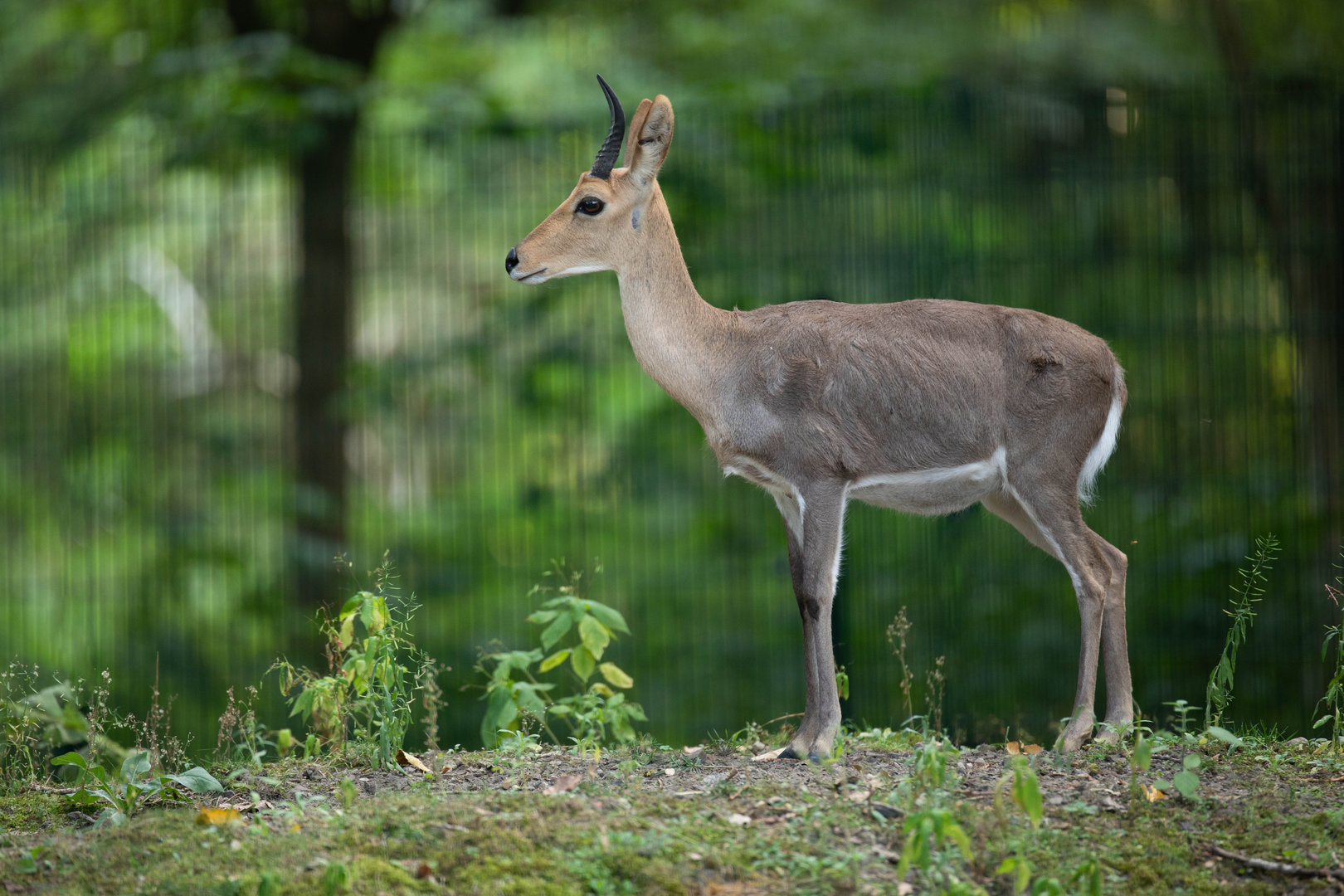
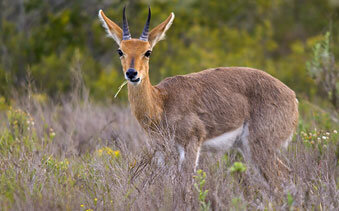
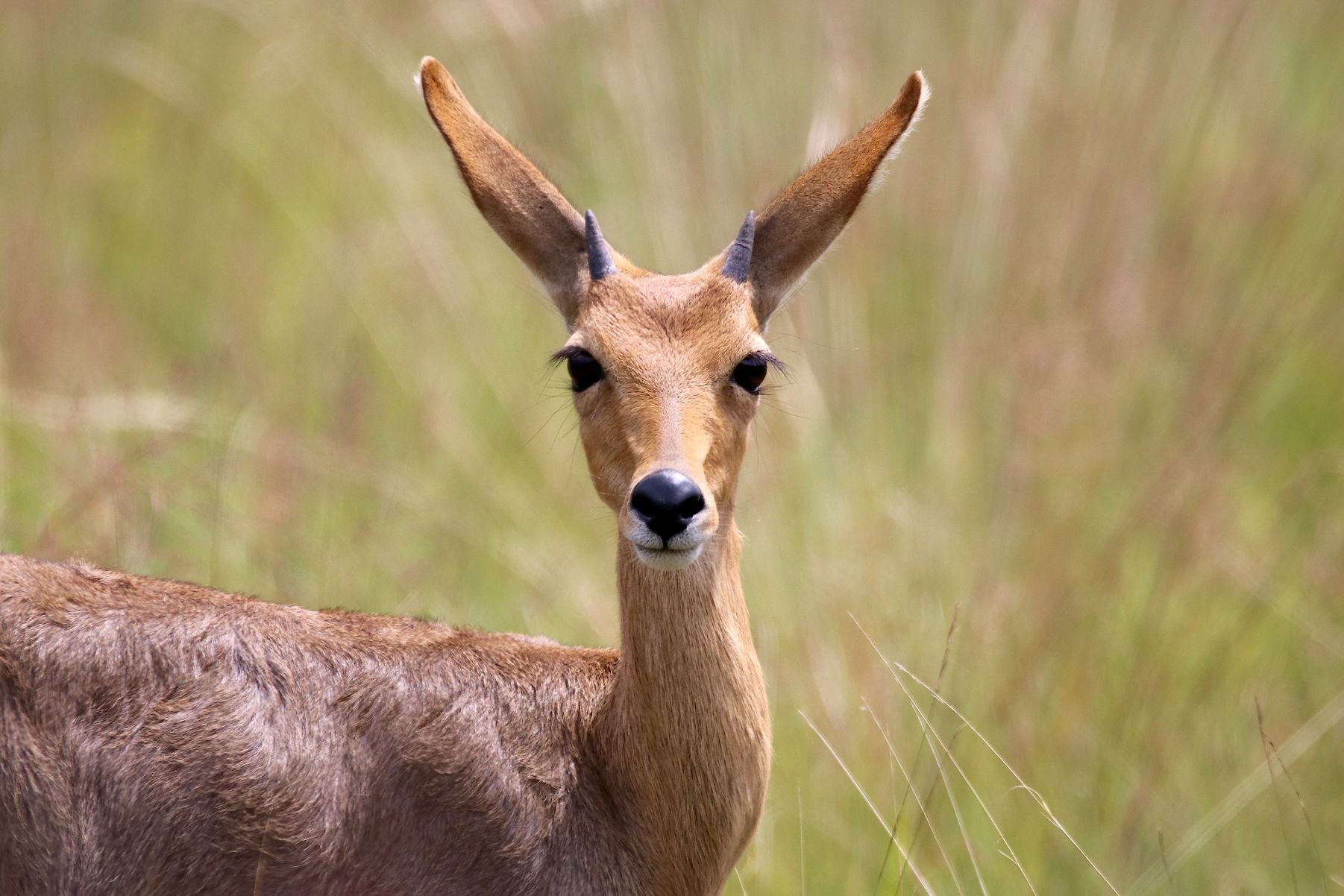
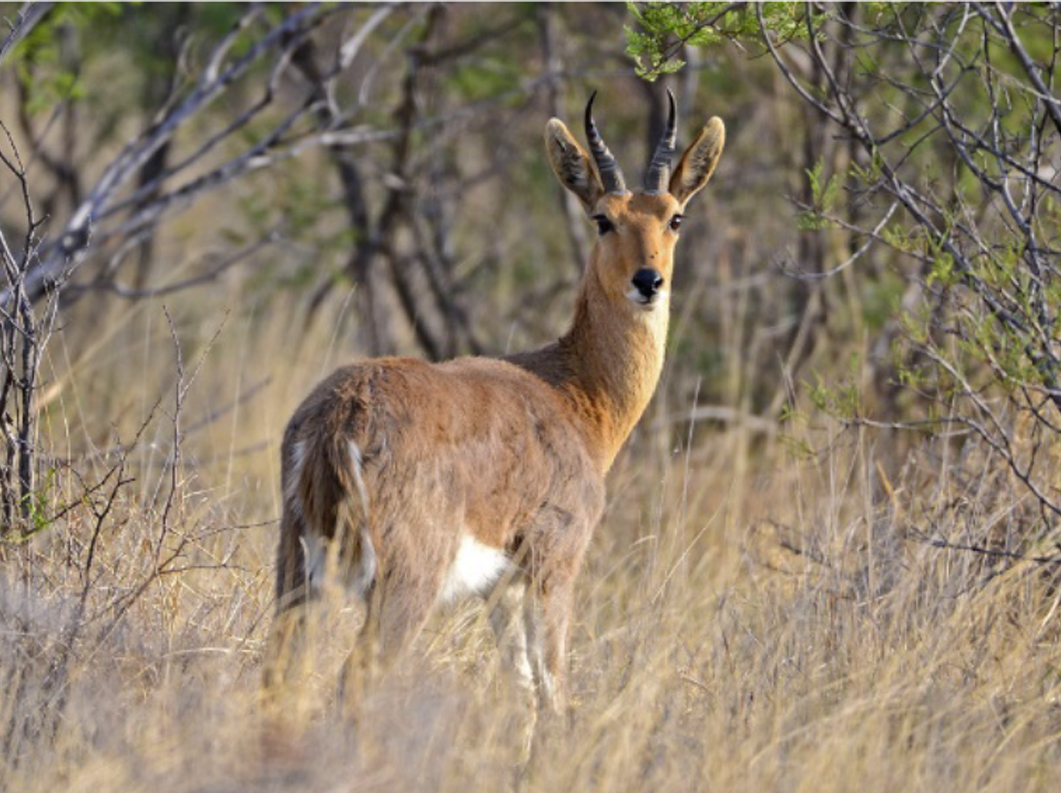
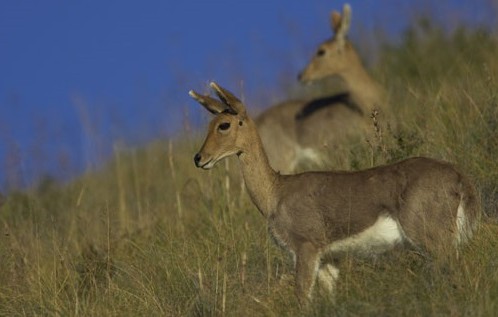

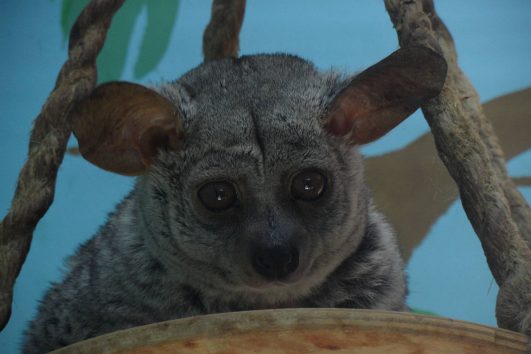
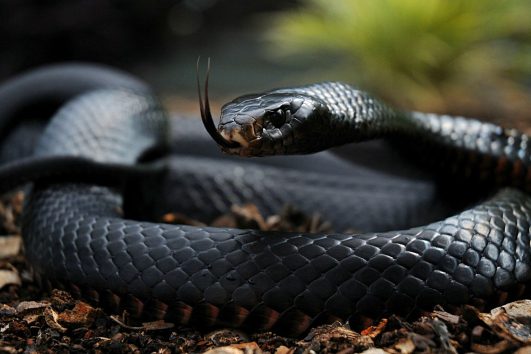
Tour Reviews
There are no reviews yet.
Leave a Review